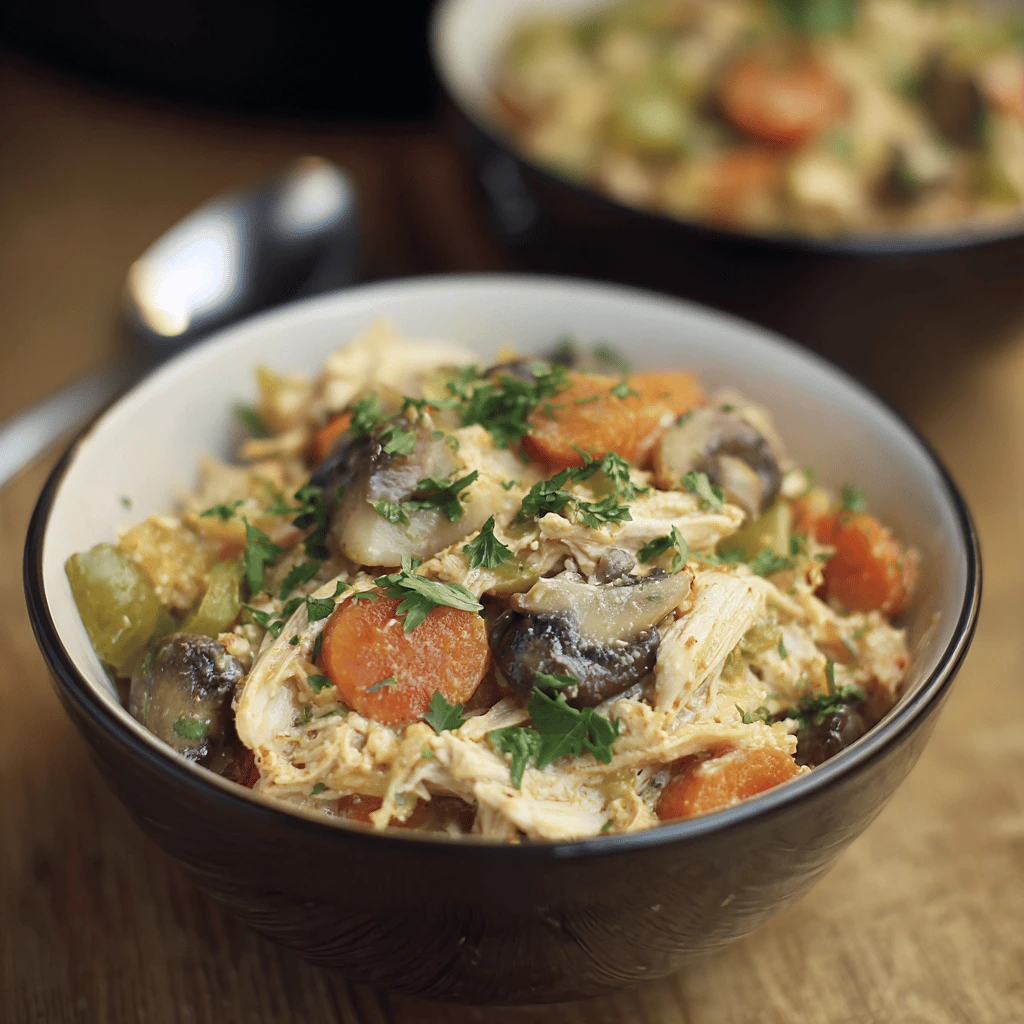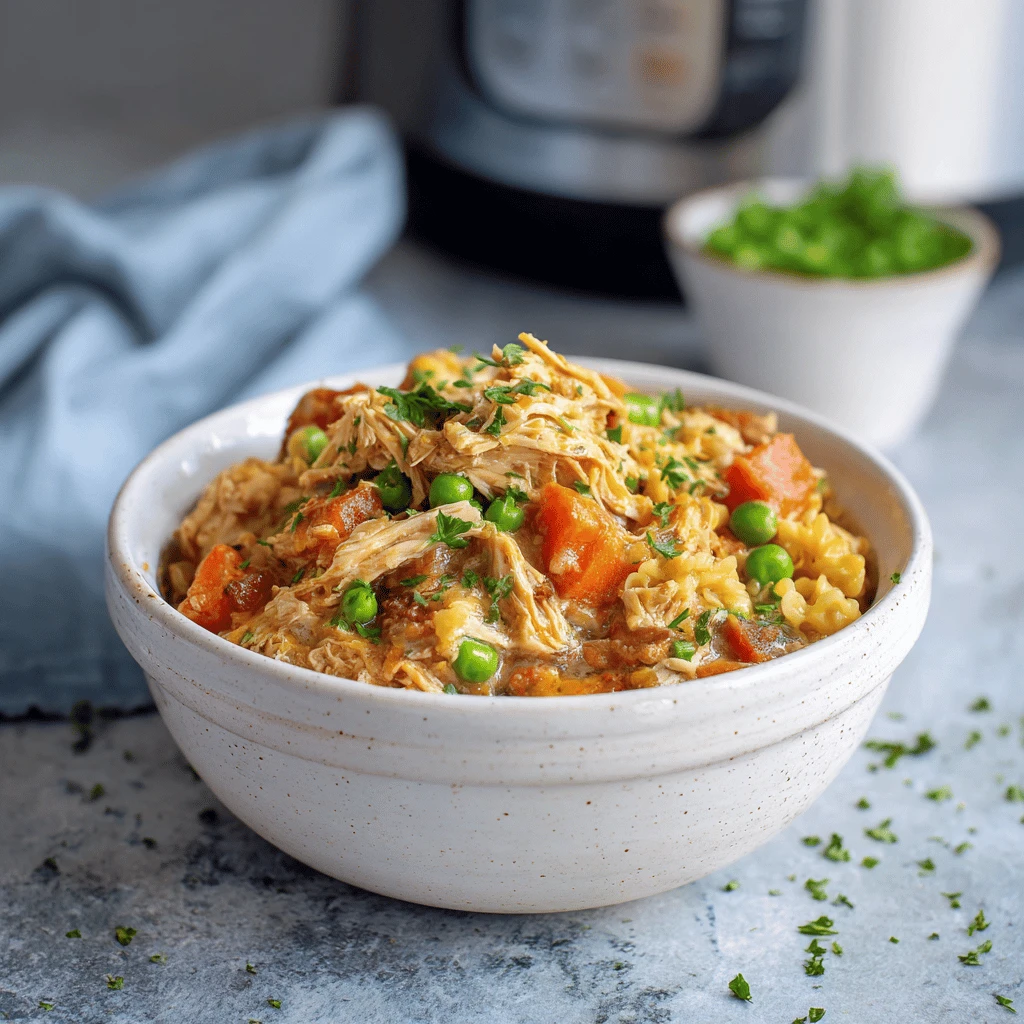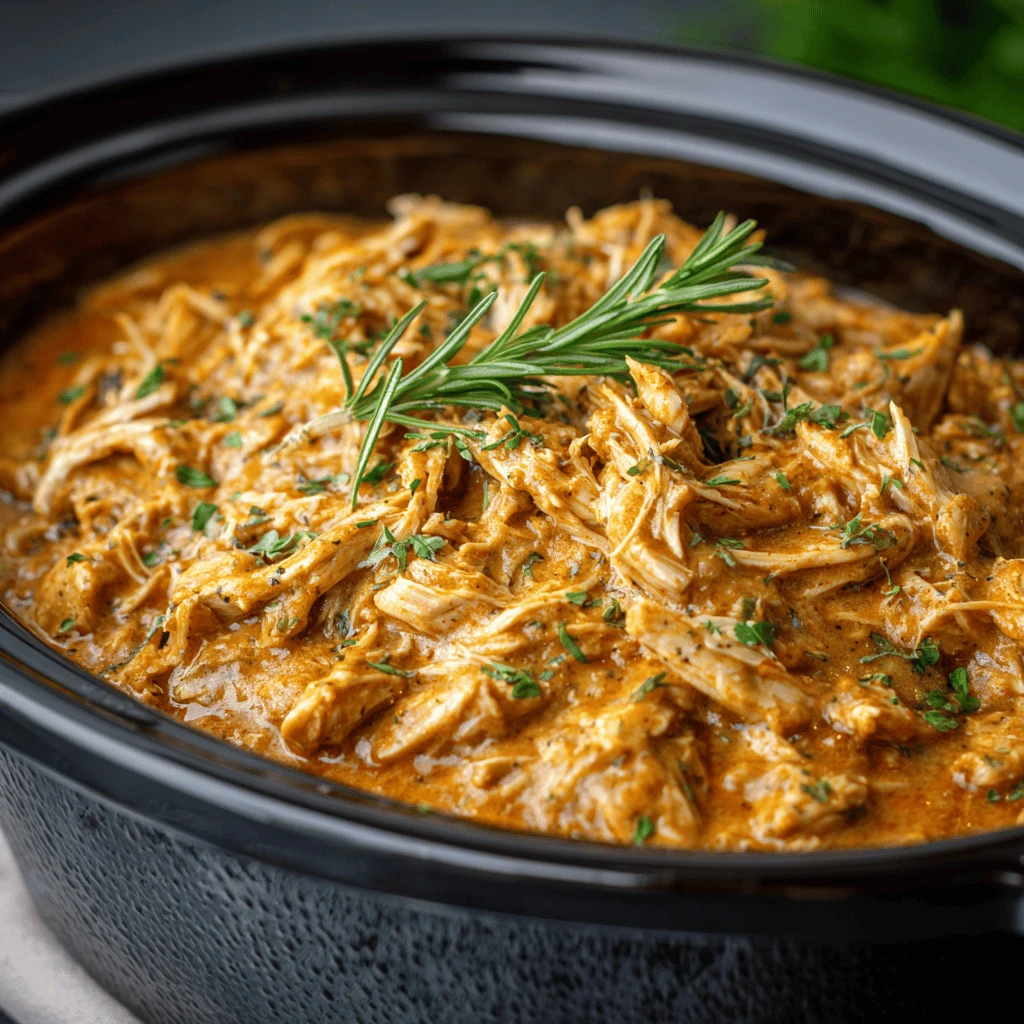Healthy Slow Cooker Turkey Casserole
Introduction: The Perfect Comfort Food, Made Easy
In today’s fast-paced world, finding time to cook a healthy and satisfying meal can feel like a daunting task. But what if you could enjoy a delicious, nutritious, and comforting casserole without spending hours in the kitchen? Enter the healthy slow cooker turkey casserole. This recipe is a game-changer for busy individuals and families, offering a simple way to enjoy a flavorful and wholesome meal. Slow cookers are truly a gift to anyone who wants to eat well without being chained to the stove. They offer the convenience of one-pot cooking, allowing flavors to meld and intensify over time, resulting in a depth of taste that’s hard to achieve with other methods.
This article explores everything you need to know about creating the perfect healthy slow cooker turkey casserole. From selecting the best ingredients to tweaking the recipe to suit your dietary needs and preferences, we’ll guide you through the process, ensuring a delightful and stress-free cooking experience. Get ready to transform your kitchen into a haven of comforting aromas and delicious, healthy eating.
Section 1: Choosing Your Ingredients Wisely
The foundation of any great casserole lies in the quality of its ingredients. When it comes to a healthy turkey casserole, selecting the right components is key to both flavor and nutritional value.
- Turkey: Opt for lean ground turkey or leftover roasted turkey breast. Ground turkey is readily available and cooks beautifully in the slow cooker. If using leftover turkey, shred it into bite-sized pieces. Look for organic, free-range options whenever possible to minimize your exposure to unwanted additives.
- Vegetables: The possibilities are endless when it comes to vegetables. Popular choices include broccoli florets, carrots, celery, bell peppers, onions, mushrooms, peas, and spinach. Experiment with different combinations to find your favorite blend. Frozen vegetables are a convenient and nutritious option, especially during the off-season.
- Base: The casserole base provides moisture and flavor. Healthier options include low-sodium chicken or vegetable broth, unsweetened almond milk, or a combination of both. Greek yogurt or cottage cheese can also add creaminess and protein. Avoid heavy cream or processed cream soups, which can be high in unhealthy fats and sodium.
- Grain or Starch: To add substance and texture, consider incorporating a grain or starch. Quinoa, brown rice, whole-wheat pasta, or even sweet potatoes are excellent choices. Pre-cooking the grain or starch slightly can help prevent it from becoming mushy in the slow cooker.
- Cheese (Optional): If you choose to include cheese, opt for low-fat or reduced-fat varieties. Sharp cheddar, mozzarella, or parmesan can add a delicious flavor boost. Consider using a sprinkle of cheese on top for added flavor without adding excessive calories. Nutritional yeast is a great dairy-free option to add a “cheesy” flavor.
- Herbs and Spices: Herbs and spices are essential for enhancing the flavor of your casserole. Experiment with different combinations to create your desired taste profile. Popular choices include garlic powder, onion powder, dried oregano, dried thyme, paprika, salt, and pepper. Fresh herbs, such as parsley, chives, or rosemary, can be added at the end of the cooking process for a burst of freshness.
Section 2: A Step-by-Step Guide to Slow Cooker Success
Now that you’ve gathered your ingredients, it’s time to assemble your healthy slow cooker turkey casserole. Follow these simple steps for a guaranteed delicious and satisfying meal.
1. Prepare Your Ingredients: Chop all vegetables into bite-sized pieces. If using ground turkey, brown it in a skillet over medium heat until cooked through. Drain any excess grease. If using leftover turkey, shred it into bite-sized pieces. If using a grain or starch, pre-cook it according to package directions.
2. Layer the Ingredients: In the slow cooker, layer the ingredients in the following order: vegetables, cooked turkey, cooked grain/starch, and any seasonings. This layering technique helps ensure even cooking and flavor distribution.
3. Add the Base: Pour the broth, almond milk, or combination of both over the ingredients. Make sure the liquid covers most of the ingredients, but doesn’t completely submerge them. Add Greek yogurt or cottage cheese, if using.
4. Cook on Low: Cover the slow cooker and cook on low for 6-8 hours, or on high for 3-4 hours. Cooking time may vary depending on your slow cooker model, so check the casserole periodically to ensure it’s not overcooking. The vegetables should be tender, and the casserole should be heated through.
5. Add Cheese (Optional): If using cheese, sprinkle it over the top of the casserole during the last 30 minutes of cooking. Cover the slow cooker to allow the cheese to melt.
6. Garnish and Serve: Once the casserole is cooked through, garnish it with fresh herbs, such as parsley or chives. Serve hot and enjoy!
Section 3: Customizing Your Casserole: Variations and Substitutions
One of the best things about slow cooker casseroles is their versatility. You can easily adapt the recipe to suit your dietary needs, preferences, and the ingredients you have on hand. Here are some ideas for variations and substitutions:
- Vegetarian/Vegan Option: Replace the turkey with lentils, chickpeas, or crumbled tofu for a vegetarian or vegan option. Use vegetable broth as the base and omit the cheese or substitute with a plant-based cheese alternative.
- Gluten-Free Option: Use gluten-free pasta, quinoa, or rice as the grain/starch. Ensure that all other ingredients, such as broth and seasonings, are also gluten-free.
- Low-Carb Option: Omit the grain/starch altogether or replace it with cauliflower rice. Focus on adding more non-starchy vegetables, such as broccoli, spinach, and mushrooms.
- Spicy Kick: Add a pinch of red pepper flakes, a dash of hot sauce, or a chopped jalapeno pepper to give your casserole a spicy kick.
- Mediterranean Twist: Incorporate Mediterranean-inspired ingredients, such as sun-dried tomatoes, olives, feta cheese, and oregano.
- Mexican Fiesta: Add black beans, corn, salsa, and chili powder for a Mexican-inspired casserole. Top with avocado and cilantro before serving.
- Different Protein: Substitute ground turkey for ground chicken or beef for a slightly different flavor profile. Shredded pork can also be delicious.
- Creamy Texture: Stir in a can of drained and rinsed cannellini beans at the end for a creamier texture without adding extra dairy.
Section 4: Health Benefits of Slow Cooker Turkey Casserole
Besides being delicious and convenient, a healthy slow cooker turkey casserole offers a range of health benefits:
- Lean Protein: Turkey is a lean source of protein, which is essential for building and repairing tissues, supporting muscle growth, and keeping you feeling full and satisfied.
- Nutrient-Rich Vegetables: The abundance of vegetables in this casserole provides a wealth of vitamins, minerals, and antioxidants, which are vital for overall health and well-being.
- Fiber: The inclusion of grains and vegetables adds fiber to the casserole, promoting healthy digestion, regulating blood sugar levels, and reducing the risk of chronic diseases.
- Low in Unhealthy Fats: By using lean turkey, low-fat dairy products (if using), and healthy cooking methods, this casserole is naturally low in unhealthy fats.
- Customizable to Dietary Needs: As mentioned earlier, the versatility of this recipe allows you to adapt it to suit your specific dietary needs and preferences, making it a healthy option for a wide range of individuals.
- Promotes Home Cooking: Preparing meals at home, rather than relying on processed or restaurant foods, gives you more control over the ingredients and portion sizes, contributing to a healthier lifestyle.
- Cost-Effective: Using affordable ingredients like ground turkey and frozen vegetables can make this a budget-friendly meal option for families.
Section 5: Tips for Slow Cooker Success and Storage
To ensure your slow cooker turkey casserole turns out perfectly every time, here are some additional tips:
- Don’t Overfill the Slow Cooker: Overfilling the slow cooker can prevent the food from cooking evenly and may even cause it to overflow. Fill the slow cooker no more than two-thirds full.
- Avoid Opening the Lid Frequently: Opening the lid of the slow cooker releases heat and moisture, which can prolong the cooking time. Try to avoid opening the lid unless absolutely necessary.
- Adjust Cooking Time as Needed: Cooking times may vary depending on your slow cooker model and the ingredients you use. Check the casserole periodically and adjust the cooking time accordingly.
- Use a Slow Cooker Liner: Slow cooker liners can make cleanup a breeze.
- Thaw Frozen Vegetables Beforehand: Although frozen vegetables can be used without thawing, thawing them can help prevent the casserole from becoming too watery.
- Store Leftovers Properly: Allow the casserole to cool completely before storing it in an airtight container in the refrigerator. It can be stored for up to 3-4 days.
- Reheat Thoroughly: Reheat the casserole thoroughly before serving. You can reheat it in the microwave, oven, or slow cooker.
Frequently Asked Questions (FAQs)
- Can I use frozen ground turkey? Yes, but make sure to thaw it completely before browning it in the skillet.
- Can I prepare this casserole ahead of time? You can assemble the casserole in the slow cooker insert the night before and store it in the refrigerator. Add the liquid just before cooking.
- Can I freeze this casserole? Yes, but the texture of some vegetables may change slightly after freezing and thawing. Allow the casserole to cool completely before freezing it in an airtight container.
- How can I prevent the casserole from becoming too watery? Avoid overfilling the slow cooker, thaw frozen vegetables beforehand, and use the appropriate amount of liquid. You can also add a tablespoon of cornstarch to the liquid to thicken it.
- What if my casserole is cooking too quickly? Turn the slow cooker to the “warm” setting to slow down the cooking process.
- What can I serve with the turkey casserole? Consider serving it with a side salad, some whole-grain rolls, or a dollop of sour cream or plain yogurt.
- Can I use a different type of cheese? Yes, you can substitute any type of cheese you like. Cheddar, mozzarella, Monterey Jack, and Parmesan are all good choices.
- Can I add beans to the casserole? Yes, beans can be a great addition for added protein and fiber. Canned kidney beans, black beans, or cannellini beans are good options. Drain and rinse them before adding them to the casserole.
- Can I make this in an Instant Pot? Yes! Use the slow cooker function on your Instant Pot. Follow the same instructions, but reduce the cooking time.
- How do I know when it’s fully cooked? The internal temperature of the turkey should reach 165°F (74°C). The vegetables should be tender when pierced with a fork.




